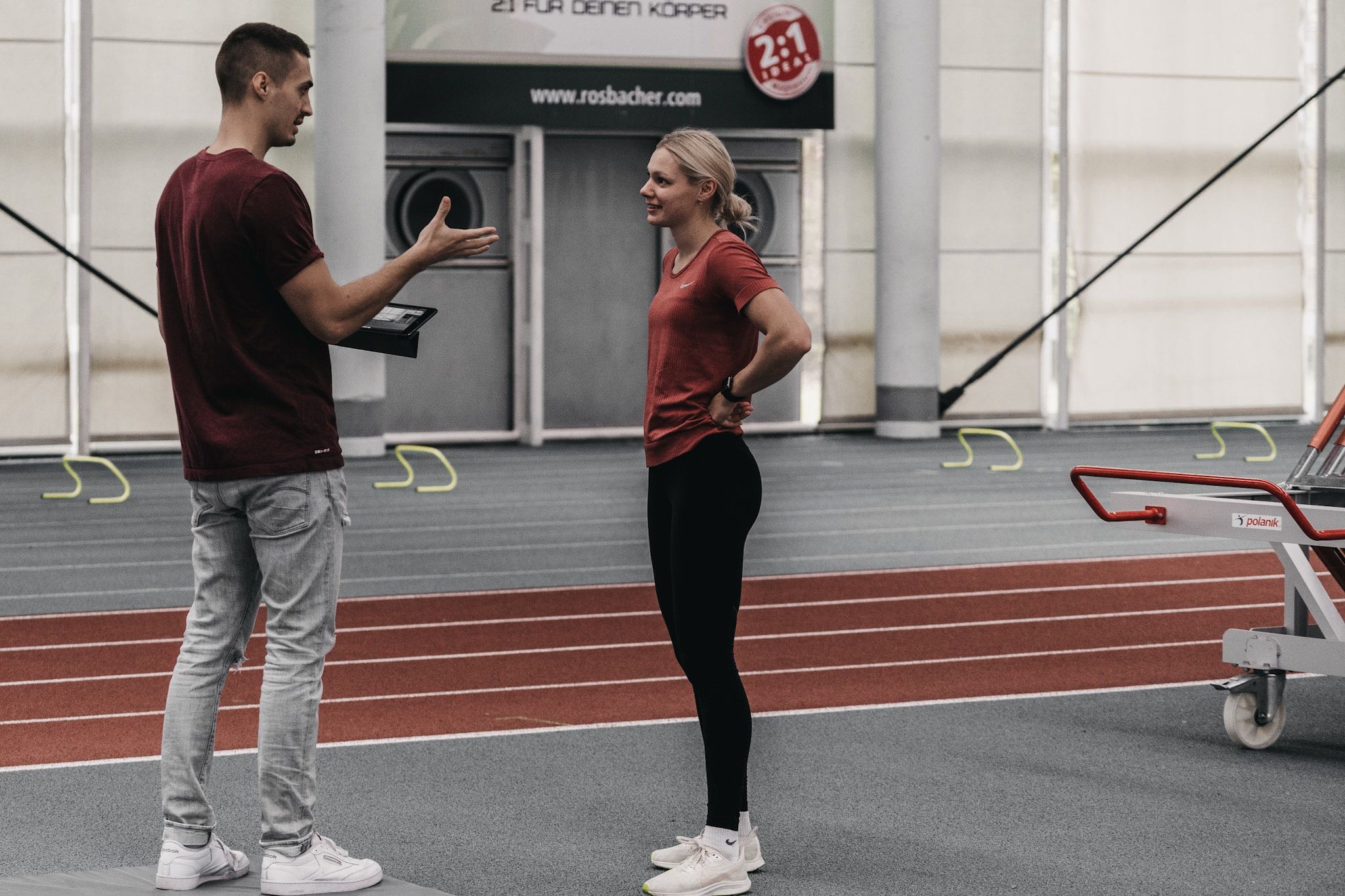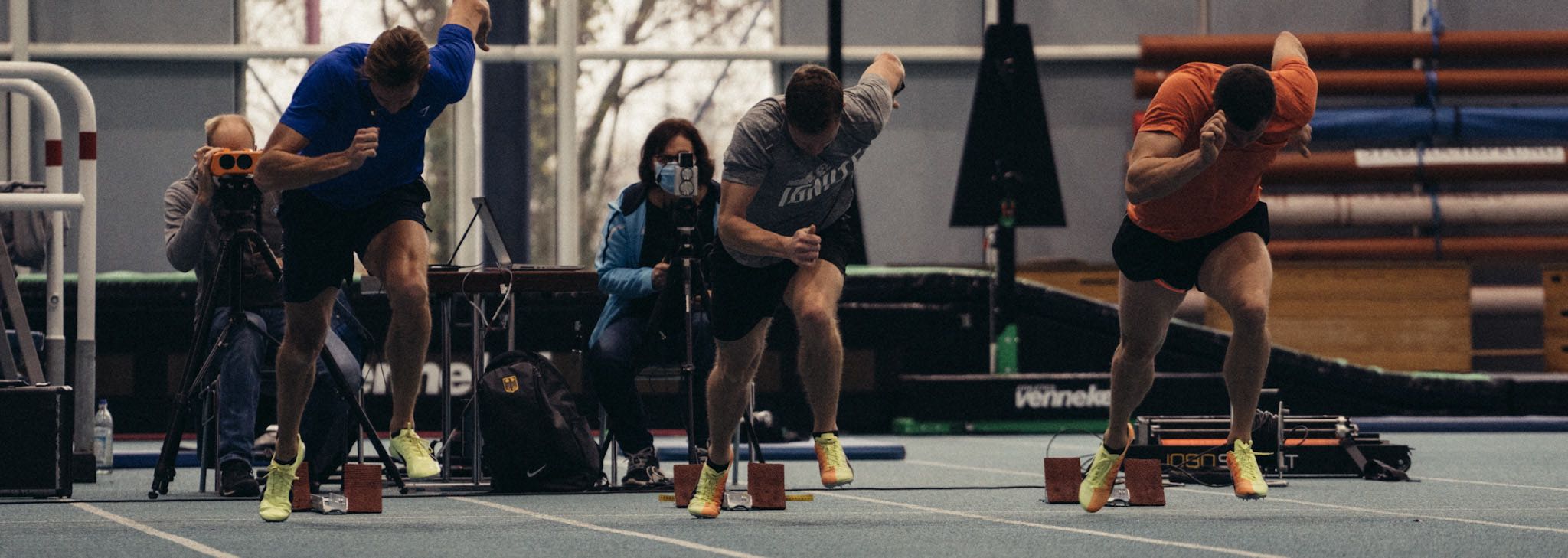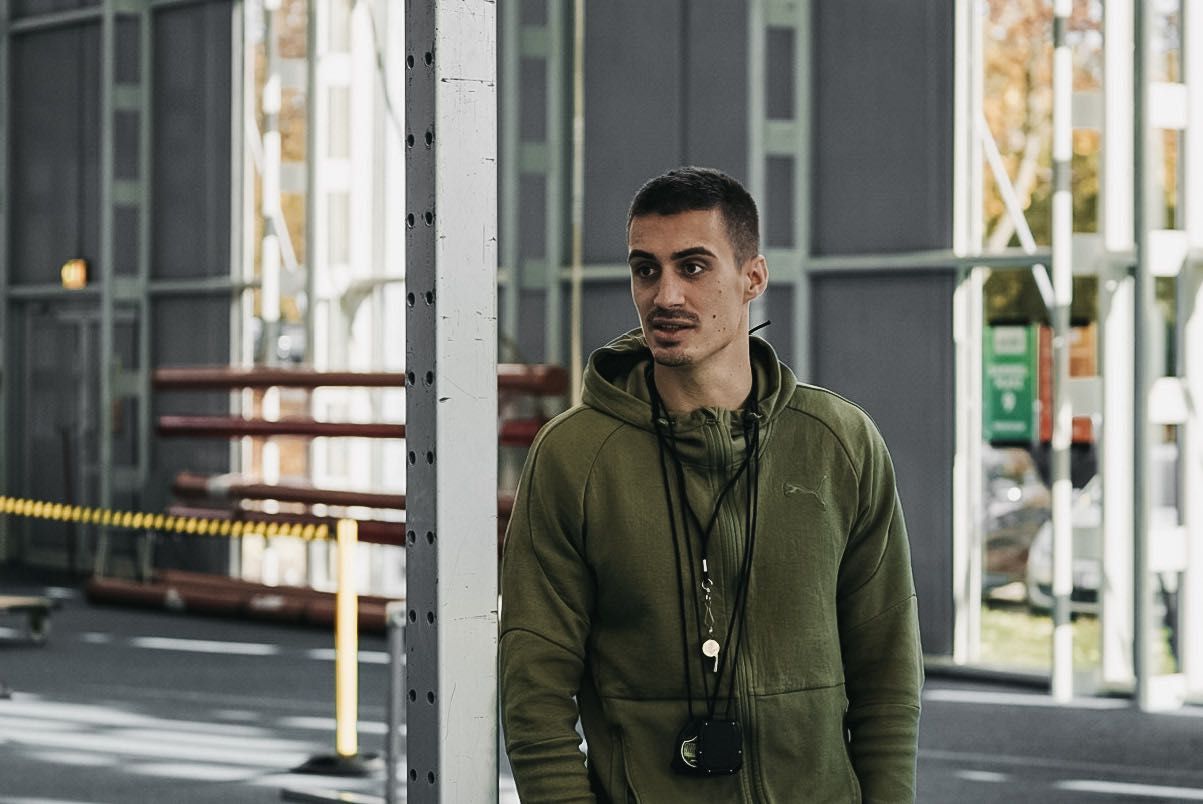Digital natives are changing the course of speed development for Germany’s fastest sprinters. Following a long tradition rooted in Soviet and East German methodologies, a new wave of internet-savvy speed coaches in the Hessischer Leichtathletik-Verband (HLV) are using their fluency with YouTube, Instagram, and a host of virtual seminars to add a diverse range of new influences: Stuart McMillan, Jonas Dodoo, Rana Reider, Lance Brauman, Dan Pfaff, and other top coaches training world-class track athletes around the globe.
“Our system is changing right now,” says David Corell, Head Coach for the short sprints in the HLV, charged with training a number of the country’s 2021 Olympic hopefuls. “There are a lot of young coaches, as well as older coaches, who understand that we have to change with the new generation. In Germany, we have a ‘Sprint Team’ where the best sprint coaches in the country are getting together, supporting each other, and communicating often. We are sharing our ideas because if we want to compete with the top sprint nations of the world, such as the United States, Jamaica, and Great Britain, we won’t get there alone, we have to work together.”
Still in his mid-twenties, Corell has rapidly worked his way up through the coaching ranks in the HLV. Though not particularly distinguished in his own competitive track career, his aptitude and potential as a coach were recognized early on by one of his sprint coaches; from there, Corell followed a swift trajectory from coaching his region’s youth sprinters to completing a sports science degree at university to having initial success with pro sprinters coming off of injury issues. Now, Corell’s training group includes some of the fastest male and female athletes in Germany, including Lisa Mayer, Kevin Kranz, and Michael Pohl.
[av_button_big label=’More track and field:’ description_pos=’below’ link=’manually, https://1080motion.com/florida-gators-track-new-tools-1080/’ link_target=” icon_select=’no’ icon=’ue800′ font=’entypo-fontello’ custom_font=’#ffffff’ color=’theme-color’ custom_bg=’#444444′ color_hover=’theme-color-subtle’ custom_bg_hover=’#444444′ av_uid=’av-154cfr9′]If It Ain’t Broke: How Florida Track & Field Integrates New Tools In A Winning Program[/av_button_big]
“There are so many good coaches I’ve learned from and now I’m trying to create my own philosophy,” Corell says. “There are two different approaches in sprint training, I call it the quality way or the quantity way. Both sides work, but you have to choose your side.”

Intensity vs. Volume
“For us, it’s more get quality reps. And this was something new in Germany, my generation started to choose the ‘quality’ side—before, there was a lot of volume, a lot of repetitions, a lot of conditioning,” Corell says, describing their daily approach. “I don’t want to do 10 reps of 200 meters, I want 4 very fast, high quality 60 meter runs out of blocks and then they can go home and rest.”
Corell’s training isn’t unmoored from tradition: he wrote his thesis on the work of Vladimir Issurin and currently uses a block periodization model to create his programming, believing the system gives his athletes the best opportunity to be in peak form multiple times during a competitive year.

“The blocks are getting shorter and the athletes are able to perform frequently through the year at a high level,” Corell says. “So, the sprinters need to sprint, they need to perform at a high level. They don’t necessarily need 12 reps in the gym, I need them to perform on the track.”
Accumulation & Acceleration
In Corell’s block periodization plan, the athletes utilize the 1080 Sprint twice a week, executing one resisted sprint training session and another focusing on assistance. During beginning, “accumulation” phases that include more supplemental work in the gym, the athletes work with heavier to moderate resistance. As they get fitter through the course of the phases, Corell’s focus turns to lighter resistance and faster speeds.
While Corell uses the resisted sprint work to develop power and acceleration, he also uses the segment data to spotlight specific technical flaws and cue the necessary improvements.
“I can look at acceleration and see if the athlete is doing it technically right,” Corell says of his methods for capturing live data in the session. “For example, if the athlete is doing a 30 meter resisted sprint and I see his top speed is at meter 23, he is doing something wrong. You have to accelerate as long as possible—you have to get faster and faster and faster. Maybe he’s popping out of acceleration, maybe he’s stuck in acceleration, something’s not right. The coaches’ eye is always the most important thing, but the 1080 helps me to see the mistake.”
Video 1. Sprinter Lisa Mayer performs a resisted sprint with Coach David Corell.
“With different loads, we’re developing different phases of the sprint,” Corell continues. “With heavy loads, we are conditioning specific strength or initial acceleration. With moderate loads, we´re developing the acceleration phase up to 20m, and with light loads we’re focusing on late acceleration to 30-40 meters. Additionally, we always have the ability to look and see if the athlete is symmetric, if their left and right leg are working the way they should and bringing the same power on the 1080.”
The Beauty of Assistance
Unlike his use of resistance—which varies by block—Corell’s approach to assistance tends to be more consistent. Although some of his colleagues believe in challenging their athletes’ central nervous systems to adapt to higher levels of assistance—even if that causes an impact on their sprint pattern—Corell prefers not to see technical form break down and wants the added assistance to help his sprinters run relaxed and confident.
“When they are getting assisted, they should just bounce behind the 1080 and feel great, putting in less effort and learning that the muscles have to work together and not against each other,” Corell says. “It should look easy, like they are floating above the ground behind the 1080. It should look beautiful.”
Video 2. Kevin Kranz performs an assisted sprint with 1080 Sprint.
“When they get fitter, I never want them to put everything into it, so that they are running out of space,” Corell says. “They should always feel everything is working together, it’s easy. They can run relaxed and a bit faster, and then still a bit faster, but the most important thing is, it’s fluid.”


Next Generation Tools
Not surprisingly, among a group of coaches that utilizes online resources and connectivity to seek out cutting-edge approaches to speed training, Corell also has a sharp eye for the best tools and technologies to support that training.
“I like technology—that’s sometimes a problem, because if there’s something new I want to have it,” Corell says, laughing. “No, I’m joking, it’s not that bad. With anything, we always have to ask the question: does it give us an advantage? This is the same for both technology and the training process. If there is a new, cool exercise, we have to ask, is it scientifically valid? And it’s the same on the technology side. We don’t need things only because they are new if we can get the same results without the technology.”

[av_button_big label=’Next post:’ description_pos=’below’ link=’manually, https://1080motion.com/individualizing-speed-training-bundesliga-patrick-eibenberger/’ link_target=” icon_select=’no’ icon=’ue800′ font=’entypo-fontello’ custom_font=’#ffffff’ color=’theme-color’ custom_bg=’#444444′ color_hover=’theme-color-subtle’ custom_bg_hover=’#444444′ av_uid=’av-pu1hkj’]Individualizing Speed Training In The Bundesliga With Patrick Eibenberger[/av_button_big]
For Corell, the main differentiating factor is whether something simply confirms what he knows to be true versus what might change what he knows to be true. An example he uses is bar velocity measurements—for his sprinters in the weight room, his cue is always to move the weight as fast as they can. So, the tracking of that speed is less crucial because the intent doesn’t change. By contrast, he utilizes certain recovery technologies as well as resistance/assistance on the track to do what he otherwise could not.
“There are a lot of sport technologies, and you always have to ask yourself, is it necessary or not?” Corell says. “The athletes get better and better when they compete against each other, and they are always competing against each other on the 1080. It brings a lot of valuable information and helps us a lot.”






























































